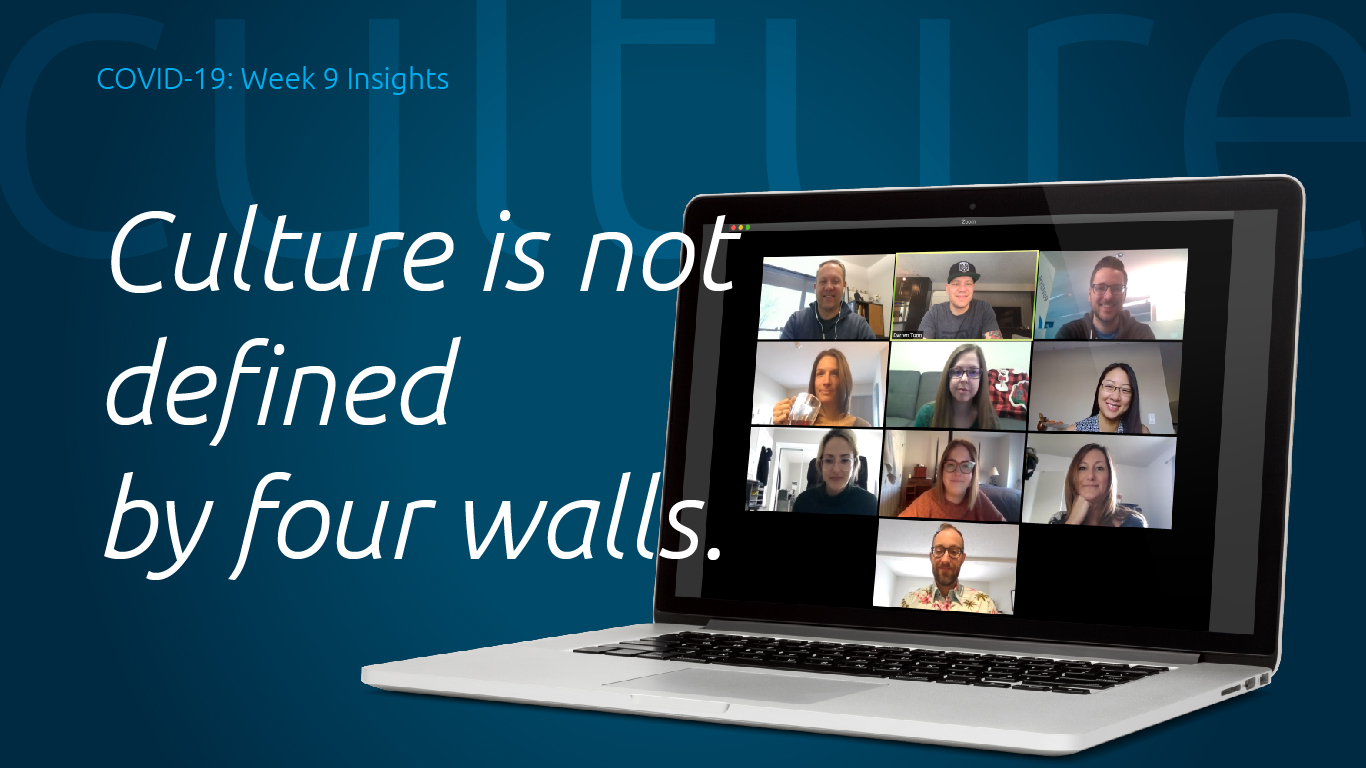As we look at building internal culture for the long-term in the face of ongoing change, either through COVID-19 or an M&A transaction, people must be our main priority. Intially, companies are typically hyper-focused on closing, but as the new normal begins to surface, organizations need to pay attention to people and our culture. In times like these, teams need positive affirmation of our confidence in them, but also acknowledgement of the stress and anxiety they are experiencing. The balance of understanding and support with passionate encouragement can create the sense of purpose and focus needed to stay the course.
Culture is not defined by four walls; instead, it’s defined by how people, including leaders, behave toward each other. In this spirit, we wanted to share some distilled thoughts about team engagement as it shows up today:
-
-
- All people crave social interaction. It’s the reason we get up every day, regardless of our personality type. Now that we aren’t gathering at water coolers, coffee shops or boardrooms, it’s even more critical to find ways of creating social time for your team. Establishing consistent means of both informal and formal virtual contact across your team reminds people of the value of those nurturing, trusted relationships with colleagues, and in turn builds culture. This may have taken a back seat to managing a remote workforce, maintaining client relationships, generating revenue, or other urgent matters to date, but now is the time to be attentive and build a program for team engagement that you can deliver in your new business environment. It’s true that people are fatigued with virtual video calls, but it’s what we have access to right now. And it’s better than a wait-and-do-nothing strategy for building effective team culture.
- Culture motivates well-being. Inevitably, your team is feeling the stress of nine weeks living in solitude, with uncertainty and fear of the future tagging along. Coupled with the limited access to guidance and support stemming from a remote work environment, team mental health check-ins need to be ongoing, and with intention to encourage sharing and ultimately trigger action as employees struggle. Many are balancing childcare, financial burdens, and the inability to access their usual support systems. So, share available Employee Assistance Programs as well as other supports your company has in place. And watch for changes in productivity or behaviour, as they are likely a symptom of other concerns. Ask questions, share your own experiences, listen without defense, and find ways to get your team what they need mentally and emotionally.
- Management styles must acclimate. Given that we are working differently, adjustments need to be made to how we manage our people. First, trust that your team is doing what they should be. If you’ve outlined clear expectations and outcomes, they will align and deliver. And, they will trust you in return, that you are doing what’s best for them. Mutual trust is at the heart of successful digital workplaces. Second, set expectations based on process rather than outcomes. Now that teams are remote, consistent feedback on projects evaluates progress along the way and helps to create a feeling of ongoing success, which will better motivate a remote workforce. Last, if you aren’t already leveraging a peer review program for evaluation, now is the time to shift to one. It will be critical to get multiple viewpoints on team performance to understand the full picture, as your own access to team members will be limited by distance.
-
Perhaps most important in building culture in this new environment is to celebrate wins, regardless of how small. Every success contributes to staying on course, and although it can be easy to check an item off the list and move on, it’s key to pause and reflect. All people really need to feel engaged and committed to their team is recognition. Honour all that your people have done to support your business through the changes, and it will go a long way.





